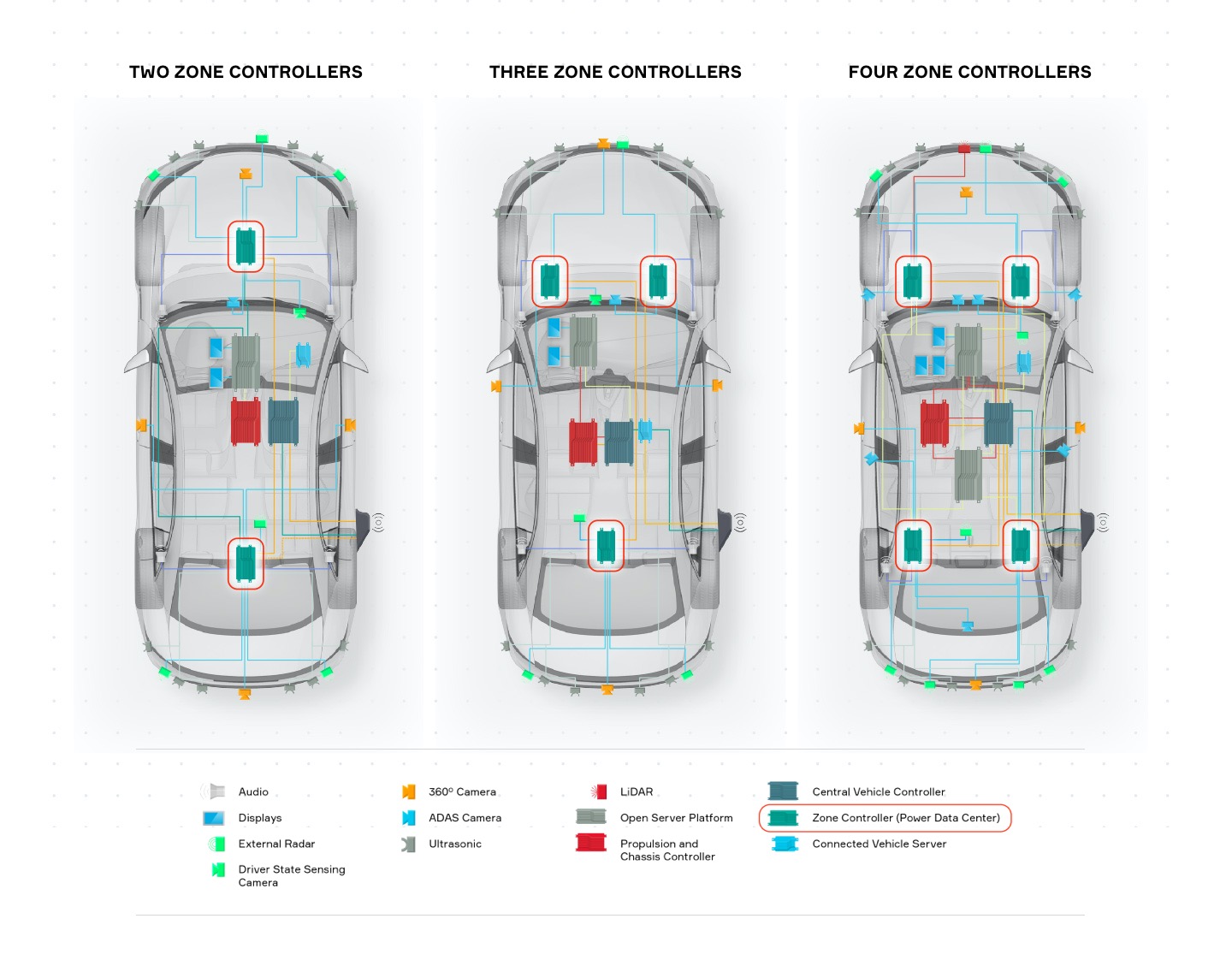In automotive applications, zone controllers are emerging as a key architectural element to solve several challenges in today’s vehicles and open the way for more advanced capabilities.
Zone controllers are nodes in a vehicle that segment the electrical and electronic architecture and serve as hubs for all of the power distribution and data connection requirements for devices – the various sensors, peripherals and actuators – within a physical section of the vehicle.
This approach simplifies cabling, which can allow more of the wiring harness assembly to be automated, thus reducing costs. Just as importantly, it enables several steps forward when it comes to power and data.
Power
As power distribution hubs, zone controllers become the natural location for smart fusing. With smart fusing, traditional melting fuses in relays are replaced with semiconductors, an approach that enables intelligent power
management, as the fuses throughout a vehicle can be managed centrally.
Zone controllers can also help in a migration toward 48V electrical architectures. A zone controller simplifies and streamlines the architecture. With a zone controller architecture, a vehicle has just one battery source, providing 48V and distributing that power to the zone controllers. The zone controllers are configured to deliver 48V to the components that are ready for it and can simultaneously step down the power to 12V for those components that are not.
Data
As the number of devices increases, it becomes unwieldy to connect each of the electronic control units (ECUs) separately, with all of their requirements for cabling, power, housings and so on. A zone controller consolidates the data connections from multiple ECUs to a single link to a domain controller.
In other words, the zone controller handles the input/output (I/O), freeing the software in the domain controller to focus on higher-level compute functions. Abstracting I/O from compute is essential to building a truly software-defined vehicle, and it is a key tenet of Aptiv’s Smart Vehicle Architecture™.
Zone controllers are also logical concentration points for up-integration of certain electronic controls, such as body and security control, HVAC control, audio management and others. Up-integration can simplify the architecture and reduce weight.
Their role may sound simple, but zone controllers are becoming increasingly necessary. With a few strategically placed zone controllers, OEMs can not only reduce complexity and costs, but also accelerate the important migration toward vehicle architectures of the future.
Learn more about the full potential of zone controllers in our white paper.
